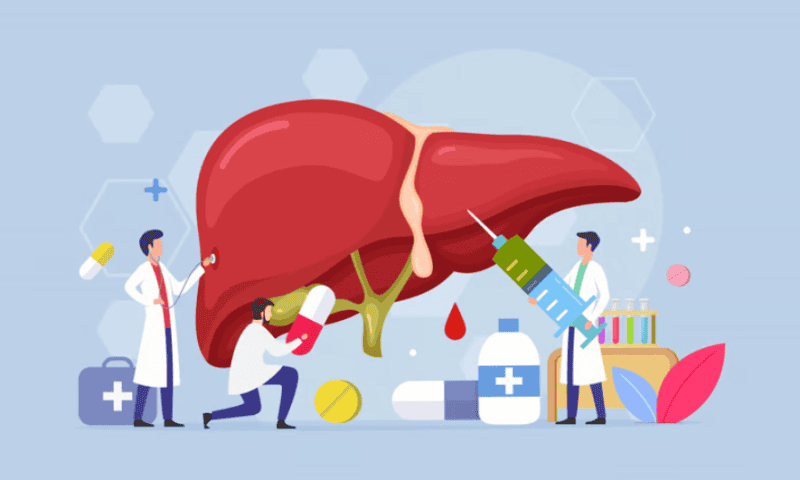Akero Therapeutics’ nonalcoholic steatohepatitis (NASH) candidate has flunked a key test. The failure of FGF21 analog efruxifermin (EFX) to significantly reduce fibrosis in cirrhotic NASH patients sent Akero’s stock tumbling—and caused fallout that dragged a rival’s share price down, too.
San Francisco-based Akero has emerged as a front-runner in the NASH race over the past 13 months. The biotech enhanced its reputation in September 2022 by linking EFX to reductions in fibrosis. That trial enrolled patients with significant or advanced fibrosis but without cirrhosis. Akero followed up in June with data that suggested EFX may complement the GLP-1 drugs that are transforming obesity treatment.
Now, the wheels have come off. Having shown efficacy in earlier-stage patients, Akero was looking to its phase 2b SYMMETRY clinical trial to show EFX reduces fibrosis in people with compensated cirrhosis. The study failed.
After 36 weeks, 24% of people on the high dose of EFX experienced at least a one-stage improvement in liver fibrosis with no worsening of NASH, compared to 14% of their peers on placebo. The low dose fared slightly worse, with 22% of patients meeting the response criteria. Neither dose performed significantly better than placebo, although Akero did post improvements in NASH resolution and liver injury markers.
The news sent shares in Akero down 66% to $16.50 in premarket trading, largely wiping out the gains it made after the positive readout last year. Investors also turned against 89bio, a biotech working on a rival FGF21 analog, sending its share price down 35% to $10.10 in premarket trading.
While investors were quick to write down FGF21 analogs, Akero argued the picture is more complex, and positive for EFX, than the primary endpoint fail would suggest. In a statement, CEO Andrew Cheng, M.D., Ph.D., said trying to show a statistically significant improvement in fibrosis by Week 36 was a “high bar.” The biotech is continuing to track patients through Week 96.
“Viewing these data in their totality, including a fibrosis improvement trend, reports of regression from cirrhosis to stage two fibrosis, statistically significant rates of NASH resolution, and statistically significant and sustained reductions in markers of liver injury and fibrosis after 36 weeks, we believe EFX has the potential to show additional improvements for patients,” Cheng said.
If the gap between the fibrosis response rates in the treatment and placebo groups widens, the biotech could show EFX is a promising prospect that was made to look bad by an overly ambitious trial design. EFX drove improvements in fibrosis by Week 24 in patients without cirrhosis in an earlier study, but Akero held off on deciding the duration of its follow up phase 3 program until seeing the SYMMETRY data.

